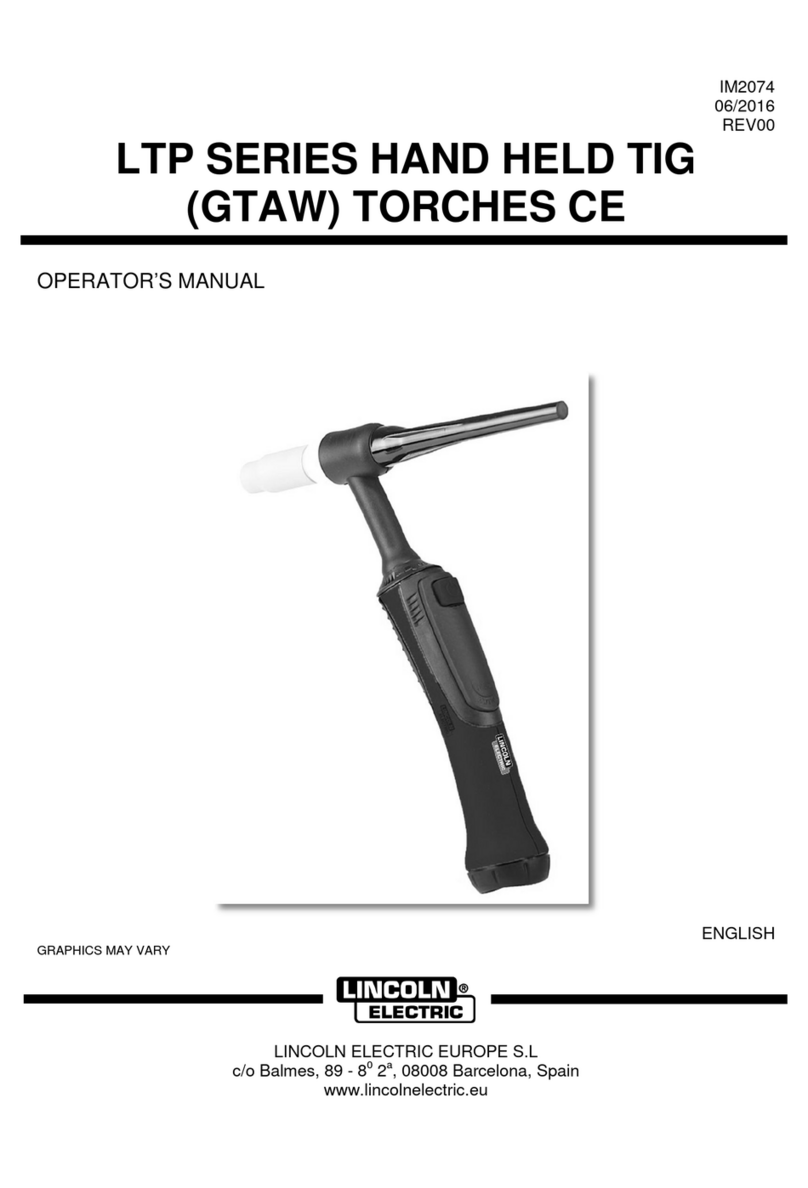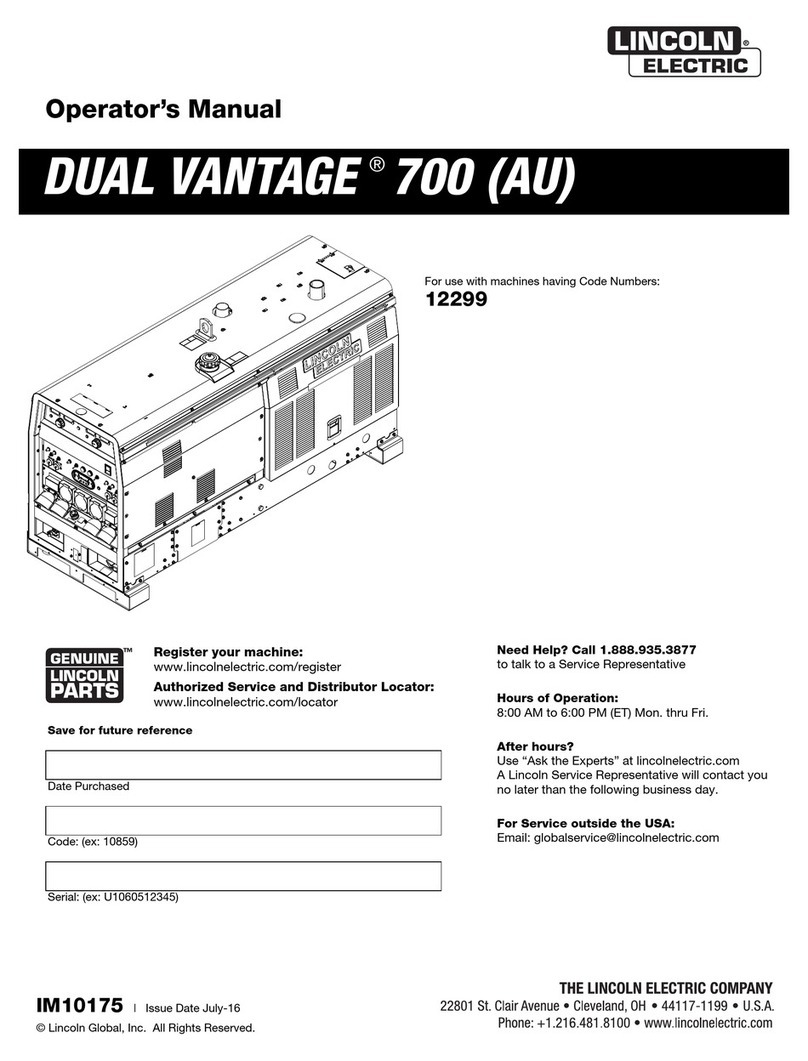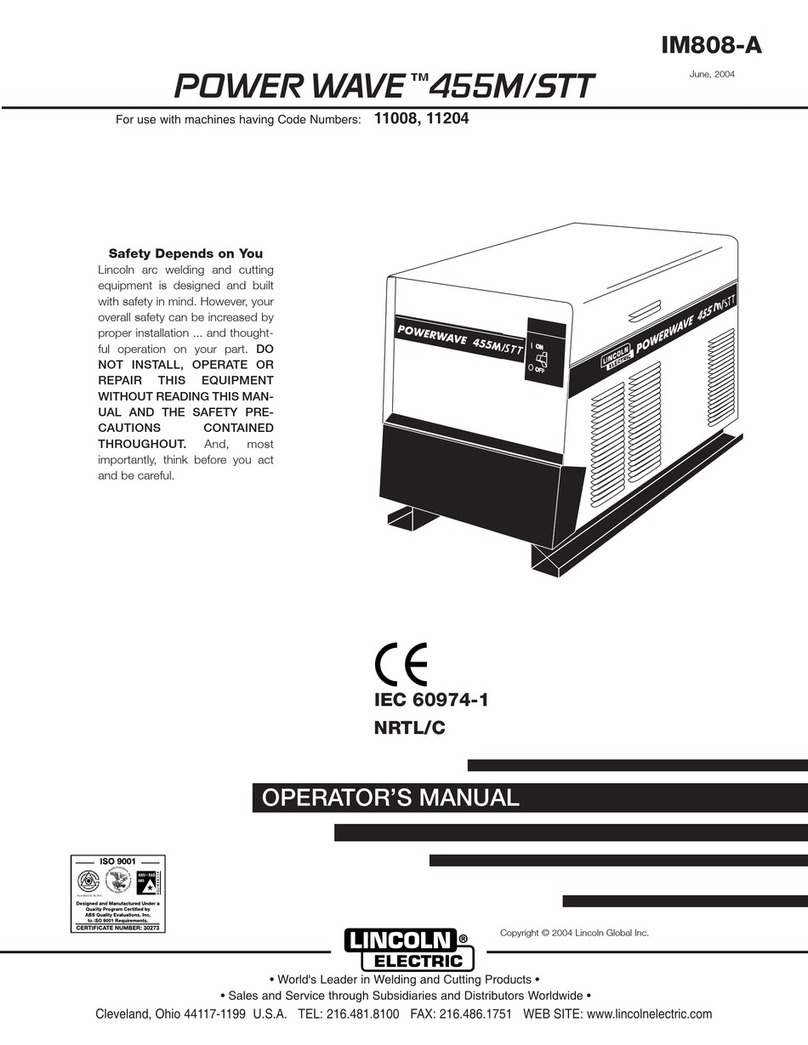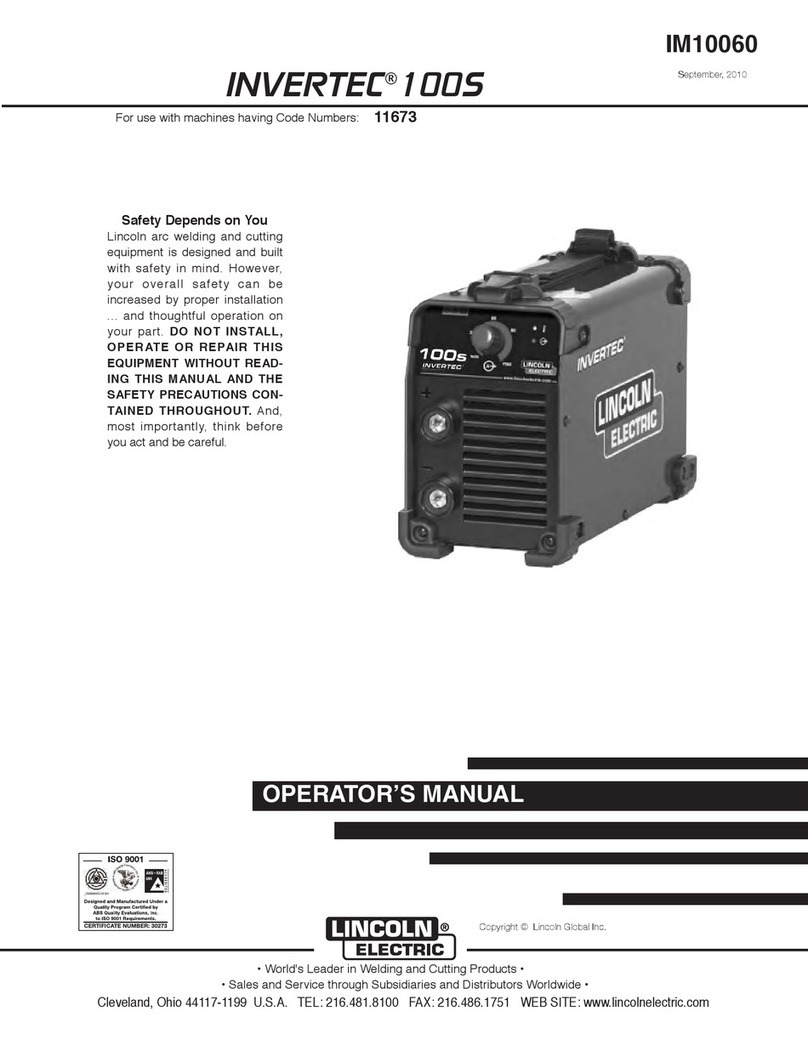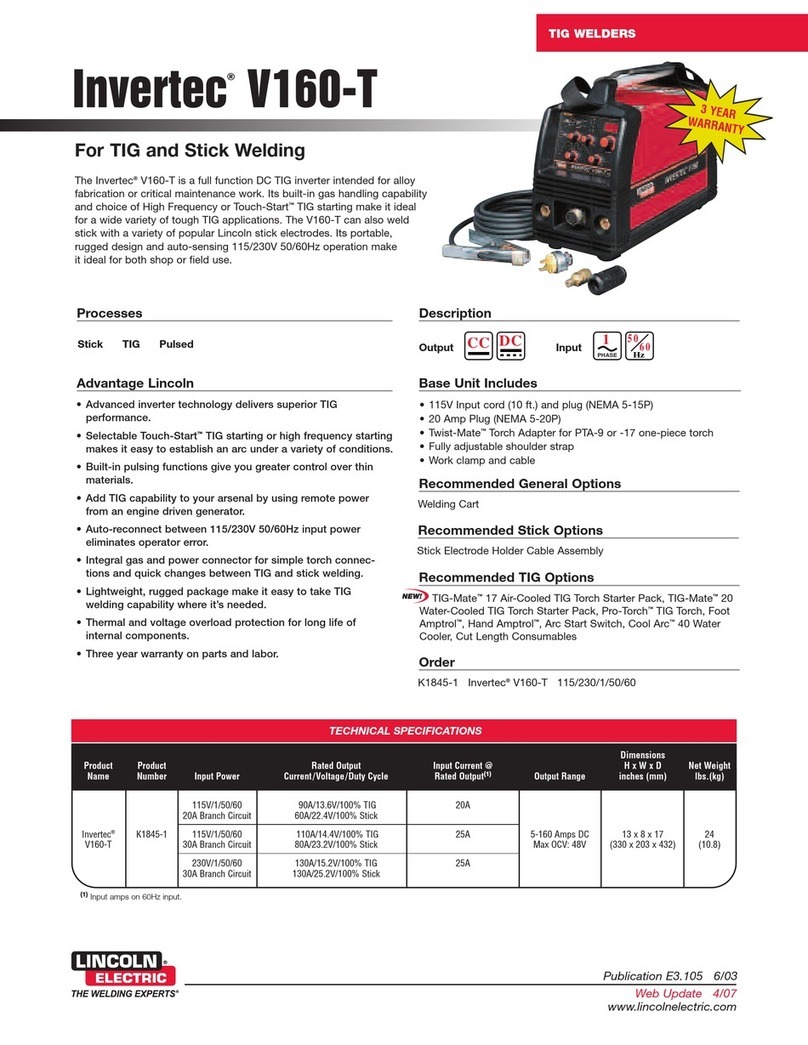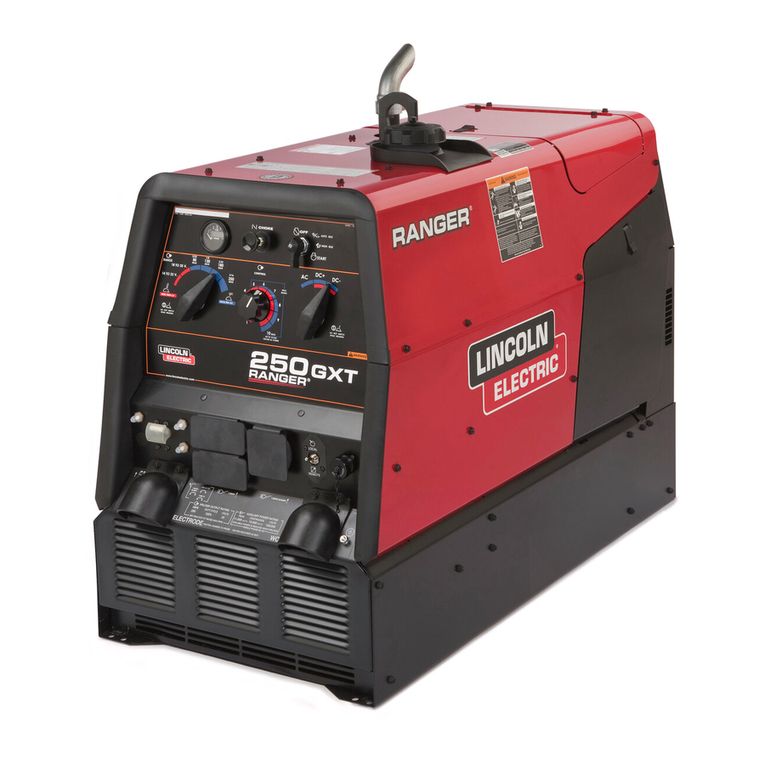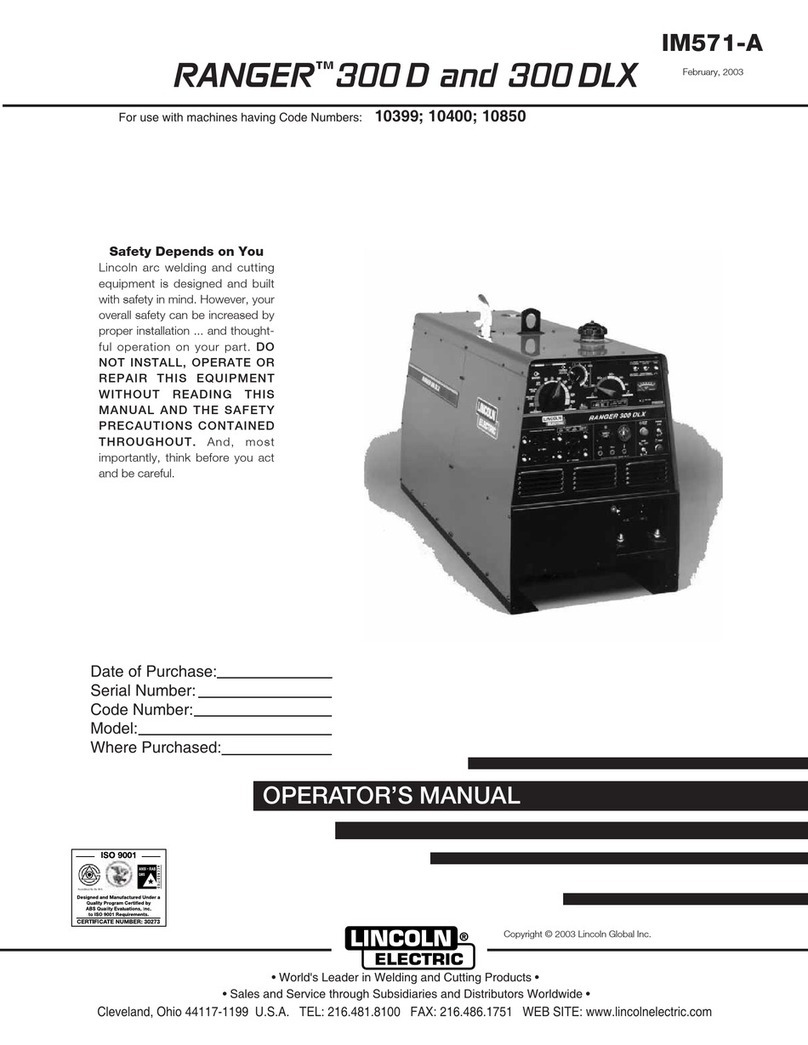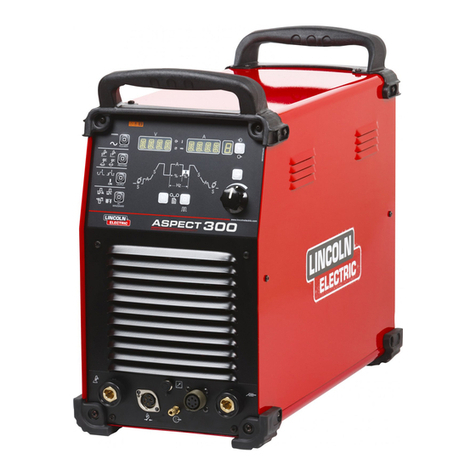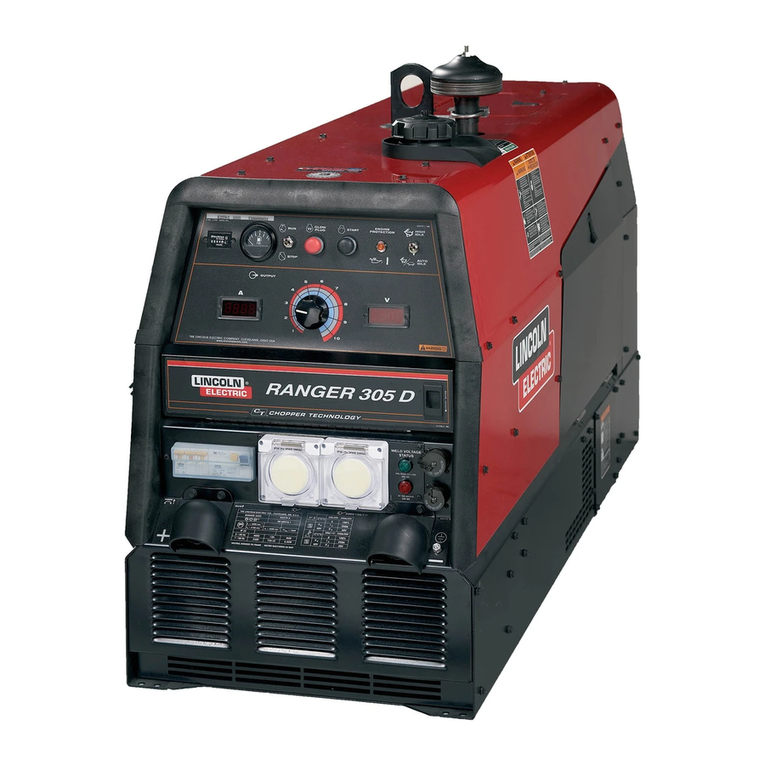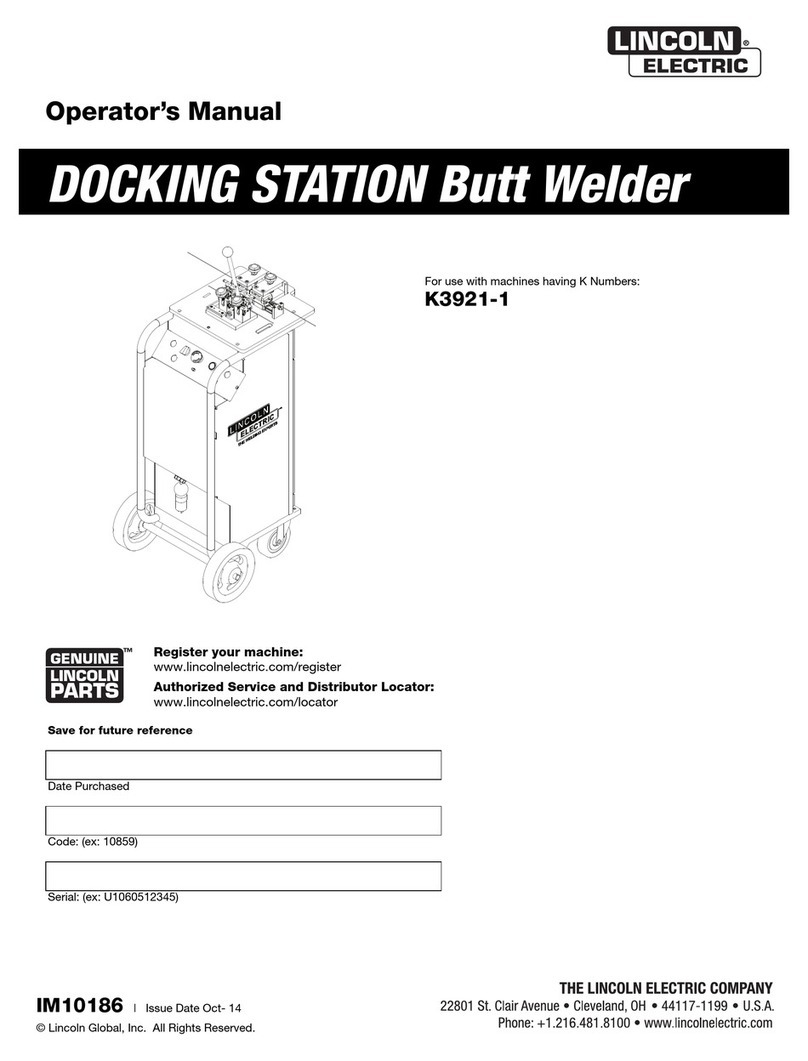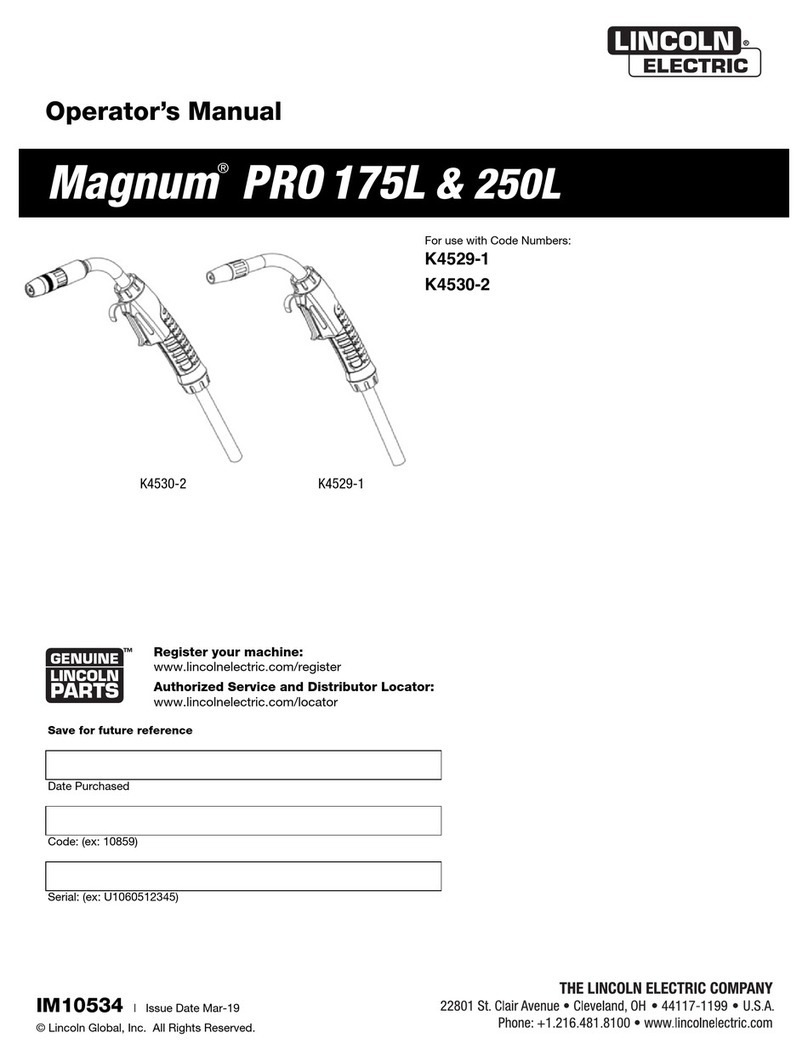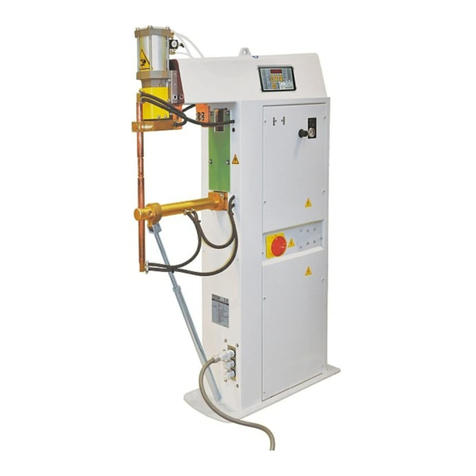CONTROLS, POSITION AND FUNCTIONS
3 EN
EN EN
2.3 HANDLING AND TRANSPORTING THE POWER
SOURCE
OPERATOR SAFETY WELDER’S HELMET - GLOWES -
SHOES WITH HIGH INSTEPS.
THE WELDING POWER SOURCE DO NOT WEIGHT MORE
THAN 25 KG AND CAN BE HANDLED BY THE OPERATOR.
READ WELL THE FOLLOWING PRECAUTIONS.
T e mac ine is easy to lift, transport and andle, t oug t e fol-
lowing procedures must always be observed:
1. T e operations mentioned above can be operated by t e
andle on t e power source.
2. Always disconnect t e power source and accessories from
main supply before lifting or andling operations.
3. Do not drag, pull or lift equipment by t e cables.
2.4 CONNECTION AND PREPARATION OF EQUIPMENT
FOR STICK WELDING.
TURN OFF WELDER BEFORE MAKING CONNECTIONS.
Connect all welding accessories securely to prevent power
loss. Carefully follow safety regulations described in SAFE-
TY RULES.
1. Fit t e selected electrode to t e electrode clamp.
2. Connect t e eart lead connector to t e negative (-) quick-
connection terminal (Ref. 6 - Picture 1 Page 3.) and t e eart
clamp of t e workpiece near t e welding zone.
3. Connect t e electrode clamp connector to t e positive (+)
quick-connection terminal (Ref. 5 - Picture 1 Page 3.) .
CAUTION MAKE THE ABOVE CONNECTION FOR DIRECT
POLARITY WELDING; FOR INVERSE POLARITY, INVERT
THE CONNECTION EARTH LEAD CONNECTOR TO THE
QUICK-CONNECTION POSITIVE (+) TERMINAL AND THE
ELECTRODE HOLDER CLAMP CONNECTOR TO THE NEGA-
TIVE (-) TERMINAL.
4. Adjust welding current wit ampere selector Ref. 2 - Picture
1 Page 3.) .
5. Press t e illuminated switc to turn on t e power source Ref.
1 - Picture 1 Page 3.) .
N.B. Serious damage to the equipment may result if the power
source is switched off during welding operations.
T e power source is fitted wit an anti-sticking device t at dis-
ables power if output s ort circuiting occurs or if t e electrode
sticks, allowing it to be easily detac ed from t e workpiece.
T is device enters into operation w en power is supplied to t e
generator, even during t e initial c ecking period, t erefore any
load input or s ort circuit t at occurs during t is p ase is treated
as a fault and will cause t e output power to be disabled.
2.5 CONNECTION AND PREPARATION OF EQUIPMENT
FOR GAS TUNGSTEN ARC WELDING (TIG)
TURN OFF WELDER BEFORE MAKING CONNECTIONS.
Connect welding accessories securely to avoid power loss or
leakage of dangerous gases. Carefully follow the safety reg-
ulations.
1. Fit t e required electrode and nozzle to t e electrode older
(c eck t e protrusion and state of t e electrode tip).
2. Connect t e eart lead connector to t e positive (+) quick-
connect terminal Ref. - Picture 1 Page 3.) and t e eart
clamp to t e workpiece near t e welding zone.
3. Connect t e torc lead connector to quick-connection nega-
tive (-) terminal Ref. 6 - Picture 1 Page 3.) .
4. Connect t e torc gas ose to t e gas cylinder outlet.
5. Press t e illuminated switc to turn on t e power source Ref.
1 - Picture 1 Page 3.) .
6. C eck t at t ere are no gas leaks.
7. Adjust welding current wit ampere selector Ref. 2 - Picture
1 Page 3.) .
CHECK GAS DELIVERY; TURN GAS CYLINDER KNOB TO
REGULATE FLOW .
NB: The electric welding arc is struck by lightly touching the work-
piece with the electrode (Scratch start).
CAUTION WHEN WORKING OUTDOORS OR IN WINDY CON-
DITIONS PROTECT THE FLOW OF SHIELDING GAS OR IT
MAY BE DISPERSED WITH RESULTING LACK OF PROTEC-
TION FOR THE WELD.
3.0 CONTROLS, POSITION AND FUNCTIONS
3.1 FRONT PANEL
Picture 1.
1. Connect t e eart lead to t e work piece to t e negative ter-
minal (-) (Ref. 6 - Picture 1 Page 3.)
2. Connect t e torc lead to t e positive terminal (+) (Ref. 5 -
Picture 1 Page 3.).
ENSURE THAT THESE CONNECTIONS ARE WELL TIGHT-
ENED TO AVOID POWER LOSS AND OVERHEATING.
3. Use control knob (Ref. 2 - Picture 1 Page 3.) to regulate
welding current.
4. Illuminated switc (Ref. 1 - Picture 1 Page 3.) must be ON
(lamp lig t) before welding operations can be started.
5. Illumination of t e yellow LED (Ref. 3 - Picture 1 Page 3.) on
t e front panel indicates a fault w ic prevents t e equipment
from functioning.
T e yellow LED indicates two fault types:
1. over eating caused by an excessively intense duty cycle. In
t is case, stop welding and leave t e power source switc ed
on until t e LED switc es off.
2. power supply too ig /too low.
In t is case, wait till t e LED switc es off, indicating normali-
sation of t e supply voltage and t en resume welding.
4.0 MAINTENANCE
DISCONNECT POWER BEFORE MAINTENANCE. SERVICE
MORE OFTEN DURING SEVERE CONDITIONS.
Every three (3) months, perform the operations below
1. Replace unreadable labels.
2. Clean and tig ten weld teminals.
3. Replace damaged gas ose.
4. Repair or replace cracked cables and cords.
Every six (6) months, perform the operation below
Blow out t e inside of t e unit. Increase frequency of cleaning
w en operating in dirty or dusty conditions.
